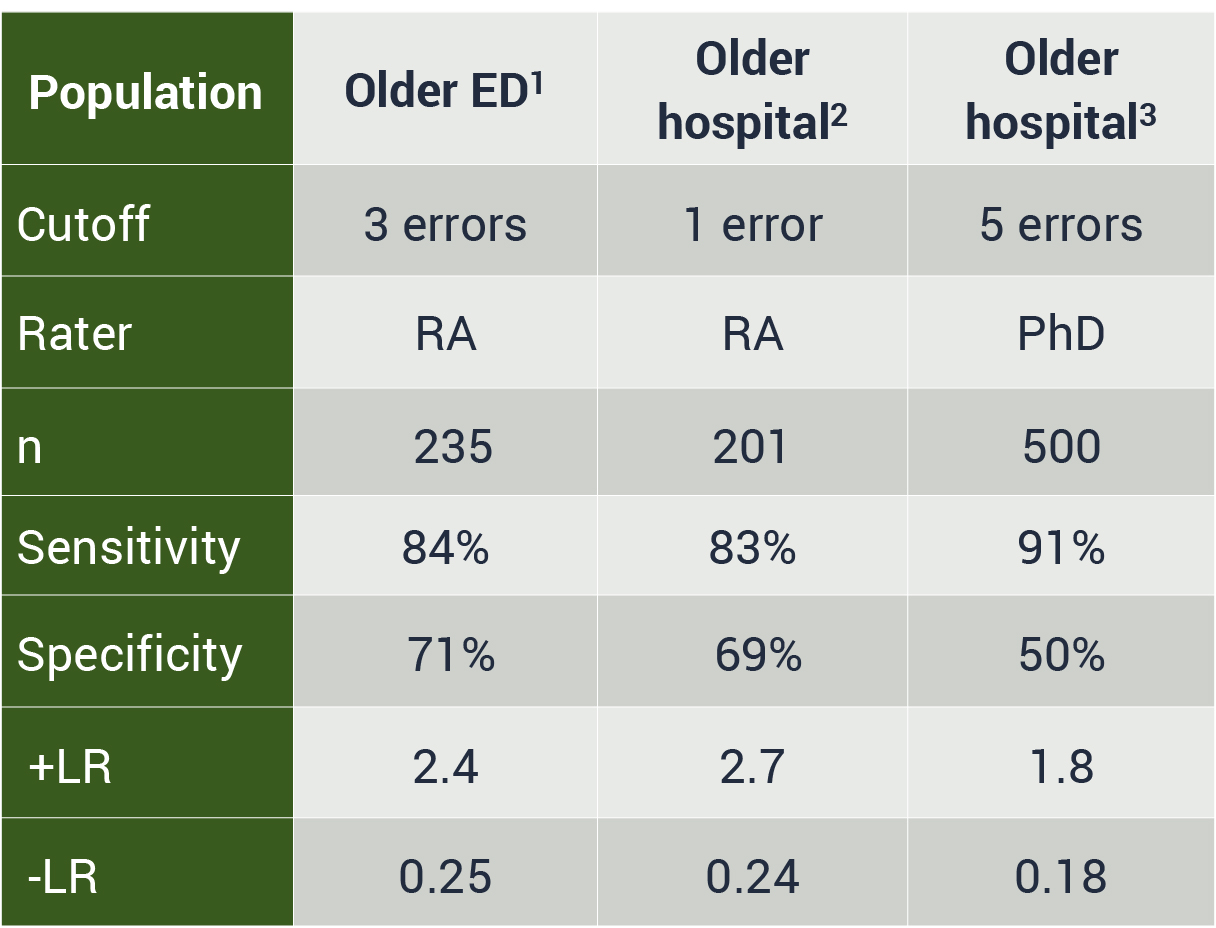Months of the Year Backwards (30 seconds)
An ultra-brief delirium assessment
For some EDs, even performing a 1- to 3-minute delirium assessment may not be feasible. One potential ultra-brief and simpler method to screen for delirium is to ask the patient to recite the months of the year backwards (MOTYB) from December to January. The MOTYB is commonly used to test for inattention and is part of several delirium assessments, such as the bCAM, 3D-CAM, and 4AT.
As a standalone assessment, the MOTYB has very good sensitivity, but modest specificity for delirium. Based upon the likelihood ratios, a negative MOTYB test moderately decreases the likelihood of delirium, while a positive test slightly increases the likelihood.
 1Marra A, et al. J Hosp Med. 2018;13(8):551–557.
1Marra A, et al. J Hosp Med. 2018;13(8):551–557.2Fick DM, et al. J Hosp Med. 2015;10(10):645–650.
3Hendry K, et al. Age Ageing. 2016;45(6):832–837.
ED, emergency department
LR, likelihood ratio
RA, research assistant
Advantages and disadvantages of MOTYB
ADVANTAGES
- Very brief
- Very simple to administer
DISADVANTAGES
- Moderate sensitivity and specificity
- Optimal cutoff not established
- Limited external validation in older ED patients
NOTE
One problem with the MOTYB task is that the optimal cutoff is not established and may differ depending on the population studied. Additional validation data are needed to better determine MOTYB’s optimal cutoff and diagnostic performances in older ED patients.
References
Marra A, et al. J Hosp Med. 2018;13(8):551–557
Fick DM, et al. J Hosp Med. 2015;10(10):645–650
Hendry K, et al. Age Ageing. 2016;45(6):832–837
Abbreviations
3D-CAM, 3-Minute Diagnostic Interview for Confusion Assessment Method.
4AT, test for delirium & cognitive impairment (Alertness, Age-birthdate-place-current-year, Attention, Acute change)
bCAM, brief Confusion Assessment Method
ED, emergency department
